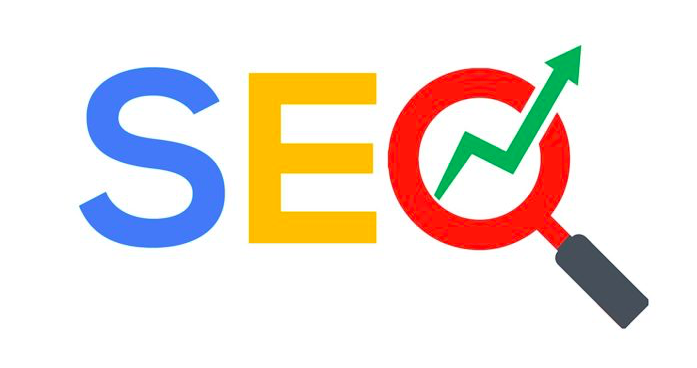
Online marketing, also known as digital marketing, refers to all marketing activities conducted via the internet. The goal is to attract, engage, and convert visitors into customers through various digital channels. By using the internet and other digital communication technologies, companies can reach a wider audience more efficiently than with traditional marketing methods. This type of marketing encompasses many tactics and strategies that can be used to achieve different business goals.

Basic SEO techniques:
Types of content:
Popular platforms:
Strategies for success on social media:
PPC is an online advertising model where advertisers pay each time a user clicks on their ad. This type of advertising enables quick results and precise audience targeting. PPC campaigns can be easily adjusted and optimized for better performance. Through various platforms, companies can reach users at different stages of the buying process.
Platforms for PPC advertising:
Advantages of e-mail marketing:
Best practices for e-mail marketing:
Analytics tools:
Key metrics:
Advantages of Online Marketing
Online marketing offers numerous advantages compared to traditional forms of marketing. One of the biggest advantages is the ability to reach a global audience through the internet. Additionally, online marketing allows precise targeting of specific user groups, which increases the effectiveness of marketing campaigns. Furthermore, the use of analytical tools enables measurable results and campaign optimization for better performance. Cost efficiency of online campaigns is also a significant factor that attracts businesses of all sizes.Key Online Marketing Strategies
SEO (Search Engine Optimization)
SEO is the process of optimizing websites to improve their visibility on search engines. The goal is to achieve a higher rank in search results for relevant keywords. Search engine optimization involves various techniques and tactics that help attract organic traffic to the website. In this way, companies can increase the number of potential customers and improve brand visibility.
The Importance of SEO
SEO helps attract organic traffic to the website, which can result in more potential customers and improved brand visibility. SEO is a long-term strategy that can bring lasting results if done properly. Quality SEO also helps build user trust, as websites that rank high on search engines are generally considered more reliable. Additionally, a good SEO strategy can significantly reduce advertising costs.Basic SEO techniques:
- Keyword research - finding and using keywords that users search for.
- Content optimization - writing quality content that includes relevant keywords.
- Technical optimization - improving site loading speed, URL structure, and mobile responsiveness.
- Link building - creating quality external links pointing to your website.
Content Marketing
Content marketing involves creating and distributing valuable, relevant, and consistent content to attract and engage a targeted audience. This strategy helps build trust and brand authority among users. Through various forms of content, companies can educate their audience and encourage them to take action. Content marketing can also significantly improve SEO performance.Types of content:
- Blogs - regularly publishing informative and useful articles.
- Videos - creating video content that educates or entertains the audience.
- Infographics - visual representations of data and information that are easy to understand and share.
- E-books - comprehensive guides or manuals that provide in-depth information on a specific topic.
Benefits of Content Marketing
Well-designed content can help build brand authority, improve SEO, and foster customer loyalty. Content marketing can also increase user engagement and encourage sharing on social media. Quality content can attract relevant visitors and increase conversion rates. Additionally, content that provides value to users can help build long-term relationships with the audience.Social Media Marketing
Social media marketing involves using social networks to promote products or services. Social media allows companies to communicate directly with their audience and build a community around their brand. Through regular posts and interactions, companies can increase their visibility and engagement. Social media also offers various paid advertising options that can be very effective.Popular platforms:
- Facebook - platform with the largest user base and various advertising options.
- Instagram - focus on visual content and a younger audience.
- LinkedIn - business-oriented network ideal for B2B marketing.
- Twitter - platform for short and quick messages, ideal for news and current topics.
Strategies for success on social media:
- Regular posting - maintaining an active presence on the networks.
- User interaction - responding to comments and messages to build a community.
- Using paid ads - targeted advertising to reach specific audiences.
- Monitoring and analysis - using analytical tools to track campaign success and adjust strategies.
PPC (Pay-Per-Click)

PPC is an online advertising model where advertisers pay each time a user clicks on their ad. This type of advertising enables quick results and precise audience targeting. PPC campaigns can be easily adjusted and optimized for better performance. Through various platforms, companies can reach users at different stages of the buying process.
Advantages of PPC
PPC enables fast results and precise audience targeting. Campaigns can be easily adjusted and optimized for better performance. PPC also provides budget control, as advertisers can set daily or monthly spending limits. This type of advertising offers valuable data about user behavior that can be used to improve other marketing activities.Platforms for PPC advertising:
- Google Ads - the most popular platform for PPC advertising.
- Bing Ads - an alternative to Google Ads with slightly less competition.
- Facebook Ads - allows detailed targeting based on demographics and user interests.
- Instagram Ads - ideal for visual campaigns targeting a younger audience.
- Keyword research - selecting relevant keywords for ads.
- Creating attractive ads - writing ads that capture attention and encourage clicks.
- Setting a budget - determining the maximum amount you are willing to spend.
- Monitoring and optimization - regularly tracking campaign performance and adjusting strategy.
E-mail Marketing
E-mail marketing involves sending promotional messages or newsletters to a targeted group of users via email. This strategy enables personalized communication and building long-term relationships with customers. E-mail marketing is a very effective way to inform users about news, special offers, and events. Properly managed e-mail campaigns can significantly increase conversion rates and customer loyalty.Advantages of e-mail marketing:
- Personalization - the ability to tailor messages for specific users.
- Direct communication - reaching users directly in their inbox.
- High ROI - e-mail marketing often has the best return on investment compared to other forms of digital marketing.
- Easy performance tracking - analytical tools enable tracking of opens, clicks, and conversions.
Best practices for e-mail marketing:
- List segmentation - dividing the subscriber list into smaller segments for targeted campaigns.
- Attractive subject lines - creating subject lines that encourage users to open the email.
- Call to action - clearly directing users to the desired action (e.g., purchase, newsletter sign-up).
- Testing and optimization - conducting A/B tests to determine what works best.

Analytics and Performance Tracking
Analytics and performance tracking are key to successful online marketing campaigns. By using analytical tools, companies can track user behavior and measure the success of their campaigns. Data obtained through analytics can be used to optimize strategies and improve results. Regular performance tracking enables quick identification of issues and adjustment of tactics to achieve better results.Analytics tools:
- Google Analytics - the most commonly used tool for tracking visits and user behavior on websites.
- Social media insights - analytical tools within social networks for tracking engagement and reach.
- Email marketing analytics - tools for tracking e-mail campaign performance.
- PPC analytics - tools for monitoring PPC campaign success and budget optimization.

Key metrics:
- Website visits - number of visitors to your site.
- Conversion rate - percentage of visitors who complete the desired action (e.g., purchase, registration).
- Bounce rate - percentage of visitors who leave the site after viewing only one page.
- Engagement - time spent on the site, pages viewed per visit.
- Cost per acquisition (CPA) - cost of acquiring a new customer through marketing activities.
Summary
Online marketing is a crucial aspect of modern business that allows companies to reach a wider audience, increase sales, and improve brand visibility. By using various strategies such as SEO, content marketing, social media, PPC, and e-mail marketing, companies can achieve their business goals more efficiently. The key to success in online marketing is regular analysis and optimization of campaigns based on data obtained through analytics.
Arbona Club Registration

Advantages of Arbona Club awaiting you
- Arbona Blogs
- Cheatsheet
- Arbona eBook
- Arbona Podcast
- Arbona Event
- Arbona Breakfast
- Consultations
- Arbona Library
- "Digital Universe"
- 20% Discount on Arbona Academy
For more information and to register for the Arbona Club, contact us!
Contact Us
